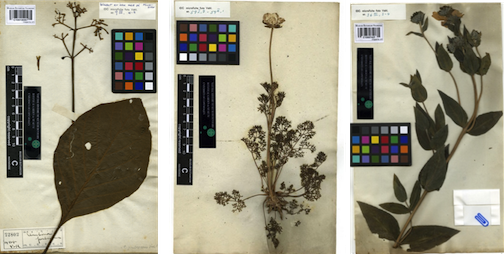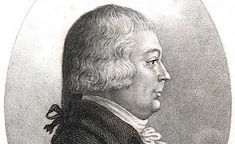Martin Vahls (1749-1804) manuscript
Martin Vahl (1749-1804) was a Danish botanist employed at the Botanical Garden, and as professor at the University of Copenhagen. Vahl was a disciple of Linnaeus, and is recognized internationally for his descriptions of more than 550 plant species. Very few other botanists have managed to name as many plants. Vahls partially unpublished manuscript containing an update of Linnaeus’ Species Plantarum is kept here at the Natural History Museum of Denmark, and thanks to a grant from the 15th of June Foundation it is now digitalized and available for scientists and the general public.

Vahl studied in Uppsala from 1769-1774, where he became one of Linneaus’ main disciples. During this time, he became aware of the importance of personal studies of the plants as the foundation of all classification and nomenclatural work. Between 1783 and 1788 Vahl traveled extensively in Europe, where he visited numerous large herbaria in order to investigate the particular species described from them. At the same time he started revising the nomenclature, as this was already then starting to become chaotic.
During his career Vahl described and named numerous plant species and more than 550 of his published types are kept in the museum collections and registered in our type database. A search in international databases like International Plant Names Index housed at the Royal Botanic Gardens Kew in London, produce more than 3,000 hits referencing names originally given by Vahl. This is a solid testament to the international importance of his work both then and now.
Vahl made all the preliminary work for an updated edition of Linnaeus’ Species Plantarum, but it was never published. His unpublished work with all the descriptions of plant species and accompanying notes were written on notecards and kept in some 2,000 folders each containing a genus. Some 26,000 handwritten notecards in Latin have been preserved at the Natural History Museum of Denmark since, and they are still regularly consulted. Every notecard contains a description of one species. Thus, an enormous amount of notes and references with accompanying herbarium collections are present in this historical archive, and it is still internationally important in plant systematics. However, as an un-registered and non-digitized archive, the knowledge of, and access to all this information have unfortunately been very limited.
At the same time it is believed that the archive still holds a large number of species descriptions, that even now 200 years later have remained unpublished. In other words, the Vahl archive is both an invaluable treasure of national importance for Denmark, and a historical heritage for the international botanical community.

Martin Vahl (1749-1804)

Martin Vahl was a Danish botanist and zoologist employed as associate professor at the Botanical Garden. He later beacme professor of botany at the University of Copenhagen, and a member of The Royal Danish Academy of Sciences.
Vahl was of great importance to Danish botany by being one of the main forces behind the preservation of the scientific value of the living collections in the Botanical Garden. He collected a large number of plants for the immense national botanical atlas Flora Danica, and personally published a number of the booklets (fasc. XCI-XXI, 1787-99)
Digitalization project

Thanks to a grant from the 15th of June Foundation, the 26,000 digitized notecards from Martin Vahls archive are now publicly available.
News about the projects and links to the database containing all the note cards and the accompanying information will be updated continuously on this page.
For additional information, please contact project leader, Professor and curator Nina Rønsted: nronsted@snm.ku.dk or collection manager Christian Lange: christianl@snm.ku.dk
